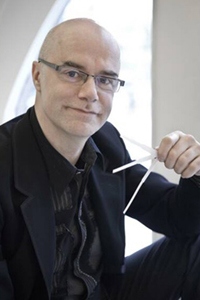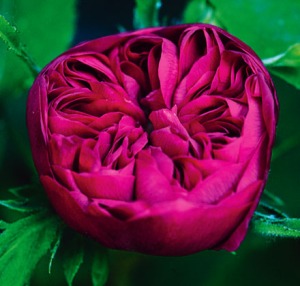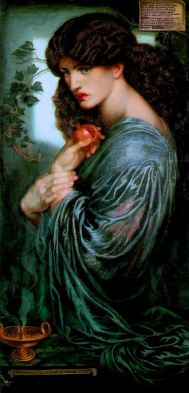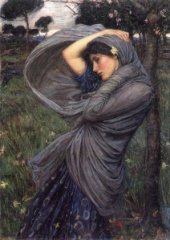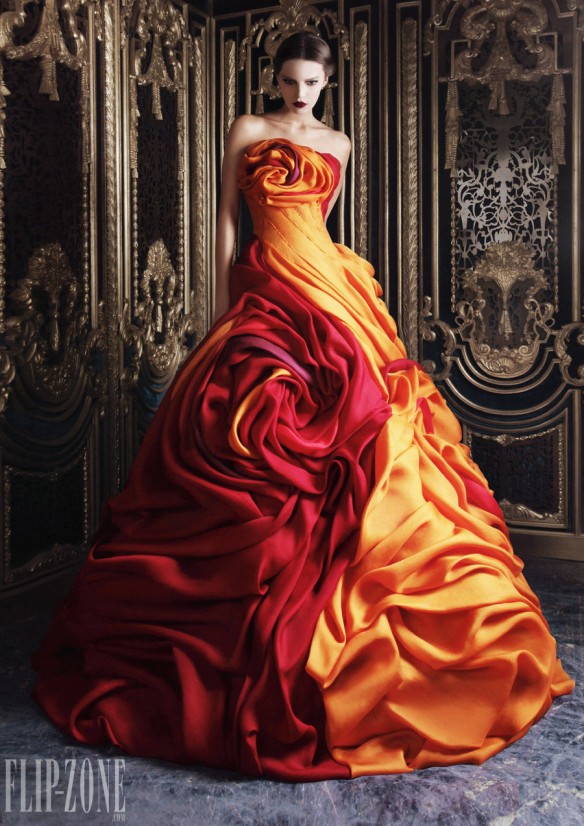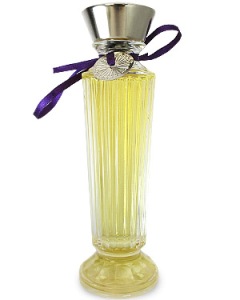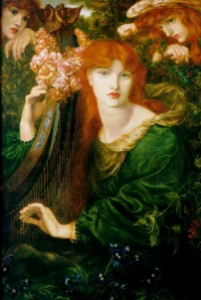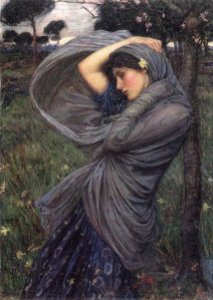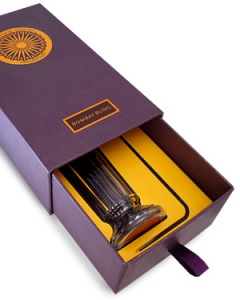A while ago, I asked Neela Vermeire of Neela Vermeire Créations (“NVC”) if she would be kind enough to do an interview. She graciously agreed, and I sent along some questions. “Some” is an understatement — not being one for brevity, I’m afraid I inundated her with rather a lengthy list. Ms. Vermeire never blinked, and never once said that her incredibly busy schedule couldn’t accommodate such a barrage. Instead, she spent a portion of her holidays answering them. (And she never told me to fly a kite when I came back with follow-ups, twice!) I’m incredibly grateful for her graciousness, her time, her enormous patience, and her always sunny disposition.
My goal with the questions was for us to learn as much about Neela Vermeire the person and perfume lover, as about the one who creates beautiful perfumes. Many of you know the brief outlines of Ms. Vermeire’s story. She was born in India, living life in the lushness of Calcutta (now Kolkata), before travelling around the world. She studied in America, completing a Master’s Degree in social sciences, then eventually moved to England where she studied law and became a solicitor. She spent a little time in Aberdeen, Scotland, practiced in London, and, for a brief period, moved to Paris where she remained for two years. She went back across the pond to England, then, six years after she left Paris, Ms. Vermeire and her Belgian husband moved back for good, this time for her husband’s work.
Ms. Vermeire was always passionate about perfumery and, in an almost organic process, she decided to express her love concretely by starting her own line. So, she approached Bertrand Duchaufour — one of the most famous perfume noses in the world, who has worked with everyone from Dior, to Acqua di Parma, L’Artisan Parfumeur, Comme des Garcons, Givenchy, Penhaligon, and many others. The result was Neela Vermeire Créations, three highly acclaimed fragrances, an award nomination, inclusion at the top of many perfume sites’ annual “Best of” lists, and a passionate following of admirers. And now, a fourth creation whose release is just a week away: Ashoka, Imperial Buddhist, a scent intended to capture the essence and life of India’s most famous Emperor, the man whose very symbol (a chakra) is now placed right in the center of India’s flag.
I asked Ms. Vermeire about Ashoka, its creation, and the feelings that she sought to capture. But what about the woman herself? As I said earlier, I wanted you to know the complex, intellectual, extremely diverse, fascinating woman behind the fragrances, as much as the perfumista who created them. Ms. Vermeire kindly shared everything from some of her favorite perfumes that she used to wear, to her favorite television shows, her culinary weaknesses, and even her favorite type of chocolates. I hope you enjoy the answers as much as I did.
* * *
What are some of your favorite notes in perfumes? Notes that make you sit up with excitement when you see them on a perfume list?
There are too many to list but here are some: iris, jasmine sambac, tuberose, rose, lavender, vetiver, galbanum, sandalwood and most precious woods, styrax, resins…
Are there any perfume notes that you struggle with or that you don’t like at all?
Certain fruits, heavy patchouli, overtly sweet “gourmand” notes.
Which fruit notes don’t you like? Peach? Grape? Grapefruit? Blackcurrant?
I have difficulty with fruity notes in general – difficult to point to and blame certain fruits. It really depends on how a perfumer works with some of the fruity notes.
What was your earliest perfume memory?
It comes of course from my childhood years in India –smell of sandalwood paste, incense, tea, spices, flowers…
Before you started your own perfume line, what were some of your favorite perfumes?
There are too many to list as I collected many fragrances over the years. What I reached out for the most were:
Chanel Bois des Iles Extrait; Chanel No. 22 Extrait; Guerlain Jicky, Vega, and Sous Le Vent; Frederic Malle Iris Poudre and Une Fleur de Cassie; Serge Lutens Iris Silver Mist and Bois de Violette. I used to wear the Le Labo Tubereuse 40 NY exclusive, Iris 39 and Labdanum 18.
Also, I love and collect vintage perfumes. My main haul this year include an unopened Shalimar extrait in the box from the 1940s with the original wrapping paper, vintage Femme, and vintage Madame Rochas over summer from an antique fair, among a few…. [All font emphasis to the names added by me.]
Did you ever have a signature fragrance?
I don’t have a signature fragrance; I have always been too interested in experimenting or trying new scents. That said, I do wear NVC Mohur frequently, and a future creation which is still work in progress. [Font emphasis added by me.]
When you started your own perfume house, you obviously had a clear overall vision and inspiration for the perfumes that subsequently became Trayee, Mohur and Bombay Bling. What happens after you have that initial idea for a scent? Can you share a little about the steps in the creative process, and the methods by which you and Bertrand Duchaufour rendered your initial idea into something concrete? For example, would both of you test out different formulas each week?
Once I have clear vision – it is expressed to the perfumer. Sometimes we can start with a part of the entire vision and then build the foundation of the fragrance – we usually work on a couple of options in line with the original idea.
For Ashoka, the challenge was rather different compared to the first trio (which express vast periods of history) and not a legendary personality who helped spread a magnificent religion Buddhism. [Font emphasis to the name added by me.]
Can you expand a little on the process of building the perfume’s foundation and working with different options in line with the original vision?
It is one of the ways for me to develop and flesh out ideas – when you express an idea – you may not get (as a mod) what you think it is going to be. [Me: “Mod” is industry-speak for “version.”] The guiding factor is in imagination of the notes and the balance of the work-in-progress creation.
A perfume can take shape from those early stages to something very different from what was presented at say stage one. It is truly a matter of being on the same page for all parties involved in the creation.
Things take time in general – it is either a matter of being quick/hurried and accepting mods which may not be fully formed or the tougher route when one decides to carry on with the development and make sure that one reaches a satisfactory stage where the “eureka moment” actually happens!
Why did Emperor Ashoka appeal to you in the first place as a source of perfume inspiration, as opposed to some other Indian figure representing peace? Has he always interested you?
Personally as an Indian, Ashoka has always held a very special place since my childhood. One cannot ignore his importance if you grow up in India. In a nutshell – he was a true humanist (after his self-realization) and possibly one of the greatest emperors ever. He believed in secularism and was way ahead of his times.
In fact, our logo was adapted from Ashoka’s famous Chakra.
Our new bottle, designed by Pierre Dinand, has 24 ridges just like Ashoka’s chakra. The logo [adaptation of the chakra] is also embossed on the metal cap. [So, the perfume] is about the meaning of this important symbol.
H.G. Wells summed up what you need to know about Ashoka in his book A Short History of the World. (1922):
“Asoka was at first disposed to follow the example of his father and grandfather and complete the conquest of the Indian peninsula. He […] was successful in his military operations and —alone among conquerors— was so disgusted by the cruelty and horror of war that he renounced it. He would have no more of it. He adopted the peaceful doctrines of Buddhism and declared that henceforth his conquests should be the conquests of religion.
The Mahabodhi temple in Bodhgaya, India, constructed by Ashoka. Two monks are meditating in front of it. The tree under which the Buddha attained enlightenment is on the left, behind the monks. This temple is the number 1 pilgrimage site of Buddhism in the world. Source: Wikicommons.
His reign for eight-and-twenty years was one of the brightest interludes in the troubled history of mankind. He organized a great digging of wells in India and the planting of trees for shade. He founded hospitals and public gardens and gardens for the growing of medicinal herbs. He created a ministry for the care of the aborigines and subject races of India. He made provision for the education of women. […]
Such was Asoka, greatest of kings. He was far in advance of his age. He left no prince and no organization of men to carry on his work, and within a century of his death the great days of his reign had become a glorious memory in a shattered and decaying India. […] But beyond the confines of India and the realms of caste Buddhism spread—until it had won China and Siam and Burma and Japan, countries in which it is predominant to this day…”
What made you both decide on certain notes, like fig, being a perfect way to reflect a stage in Emperor Ashoka’s life?
The main idea was to ensure that the fragrance has a contrasting start from a strong top note to a gentle drydown. We included some floral notes, fig leaves and fig milk, styrax, and sandalwood as some of the important notes to bring about this contrast.
Buddha achieved his enlightenment while meditating under a Bodhi tree/Sacred Fig (Ficus religiosa) and the fact that Ashoka converted to Buddhism to gain his own enlightenment.
For each of the perfumes, including the upcoming Ashoka, when did you finally know that a particular version or formula was “the” final, perfect one? Was there one of the perfumes that was a little harder to finalize and perfect (according to that mental vision) than the others?
I could go on perfecting a perfume forever and I do not care to rush towards any deadline. In the case of the trio, Trayee was the toughest to declare “final” as well as Mohur. Bombay Bling appeared to be relatively less complex to finalize in comparison to the other two.
Ashoka was incredibly tough and took many iterations. [All font emphasis to the names added by me.]
Speaking of Ashoka, there is already a tidal wave of anticipation and excitement. I read your interview with Fragrantica back in April about the two versions of the perfume that you showed at Milan: versions 108, 110 and their differences. To quote the relevant part of the Fragrantica reviewer’s perceptions: “108 is more masculine, green and harsh, with a fierce start recalling the period of the youth of Ashoka—a fearless hunter, cruel warrior and a great conqueror. 110 is more lactonic and sleek; it shows Ashoka after his enlightment [sic], as a kind and compassionate person…” Given his description and your own words about having different versions in Milan, it sounds like you went through numerous different interpretations for the scent. Did you finally settle on #108? And, if so, what made one formula seem like a better, truer, more representative fit for Ashoka than the other?
The numbers got juxtaposed somehow and did not get amended! It is 110 we settled for as it “is more masculine, green and strong, with a fierce start recalling the period of the youth of Ashoka—a fearless hunter, cruel warrior and a great conqueror.”
110 was the overall character of the perfume that we had in mind for Ashoka.
108 was relatively gentle in the opening.
One of the many, many things that I think will make Ashoka such a hit is that it hits that sweet spot in your line-up for a comfort fragrance. Each of your other ones represent a certain type of fragrance: Trayee is the seductive temptress with flair; Mohur is quiet, refined elegance; and Bombay Bling is fun, jubilant, exuberance. For me, Ashoka represents soothing comfort, a sort of serenity mixed with a mother’s protective embrace. Obviously, that’s my subjective interpretation of it, but I’m curious if you thought about the types of perfumes that you had already, and if you sought to create a type of refined, sophisticated comfort fragrance for your line-up?
Thank you for your faith in our fourth creation! To answer your question, for us – it is about the general mood of a fragrance.
Trayee is spiritual, contemplative and refined.
Mohur is elegant and glamorous as the same time.
Bombay Bling is sheer sophisticated fun.
Ashoka is intended to be that sophisticated comfort fragrance that you describe, both powerful and gentle.
All are created for men and women. We wanted everyone to be able to select a fragrance wardrobe from the collection. [All font emphasis to the names added by me.]
If you had to choose a painting, picture, photo or place that you think sums up the overall feel of Ashoka, perhaps as an emotional experience, what would it be?
It is very much a collage of various images – it is very tough to link it to one single image. The only image I can think of right now is the Ashoka’s chakra.
Emotionally it is a fragrance that works from a powerful top note to a very warm and comforting heart and base notes.
I’m always in awe of the quality of your ingredients but, especially, of that stunning sandalwood in your original trio. Without getting into trade secrets, can you tell us anything about the sandalwood or perhaps the Laotian Oudh that you use?
I have faith in a specialist perfumer like Bertrand Duchaufour’s choice of materials – naturals and aroma chemicals he uses in the compositions and we know that in the case of the NVC perfumes we did not cut any corners for the sake of economics.
We have used some precious woods like Mysore sandalwood oil and Laotian Oudh. We hope to continue on this path.
To what extent has your creative process or the perfume’s development been impacted by sourcing issues for ingredients? For example, that beautiful sandalwood is neither cheap nor in great abundance.
As mentioned above, I leave this to the perfumer and the essence company. The perfumers are specialists and know their materials well. It is their tool. Using some of the rare and precious raw materials can make a formula exorbitantly expensive.
When you work with experts/professionals in the fragrance world and I will underline experts – who know how to create a formula and know that if the ingredients are excellent – the end result will usually be very good.
There is a level of complexity to get an idea or message across through the perfume – even though the message is used mainly as an intellectual prop.
The perfume should make one “feel”/emote…
You make very French perfumes, even if they have an Indian inspiration. I think there is a very definite style to French perfumery as a whole or, at least, there was. Do you think that may be in danger in the years ahead due to things like IFRA or EU restrictions? Do you see any changes ahead for French perfumery?
Yes, but as long as one can conform to the new rules – it will hopefully be ok.
Perfume and your company obviously take up a vast amount of your time. What do you do to relax? Or, to put it another way, what are some of your non-perfume-related passions? Do you have any guilty pleasures — whether in television, books, food or something else — that you would confess to? 🙂
Music – all forms – I do enjoy going to classical concerts and productions of baroque opera.
Theatre when we visit London or NYC. We enjoy some French Theatre.
Art – everything from street art (like Space Invader), to Chagall.
Food – see below.
I adore the Cinema but rarely find the time to go.
I am also a fan of intelligent TV series – enjoy some excellent HBO productions, BBC and Nordic productions.
I know you love the TV show, Borgen, but what else? Which HBO or BBC series?
Borgen, Wallander, The Killing, The Bridge. On the BBC, there are too many to list, as I grew up with the BBC – crime, justice, comedy. But I am a Downton Abbey fan. I’m also a HUGE Poirot fan.
From HBO or American television, there are also too many, but some include The Wire, Boardwalk Empire (fabulous), The Sopranos…. I also watch other shows like: Engrenages (French), The Shield, and The Good Wife.
I’ve enjoyed Mad Men very much. It’s very stylish, and I love John Slattery’s part, as well as many other characters. Homeland is also great, and I liked the original Israeli version, Prisoners of War. Another show I like is the new Netflix series, House of Cards, mainly for Kevin Spacey. I’ve been a fan of his since early in his career with The Usual Suspects.
I do not dare to mention feature films, as I am film buff and have an endless list that may bore everyone.
Since you live in Paris with all that glorious food, and since I’m a foodie myself, I have to ask as my last question: what are some of your favorite dishes, cheeses, patisseries, breads, or other aspects of French culinary life? Please let us live vicariously through you!
Even though I live in Paris, I remain a huge fan of all types of Asian cuisine (which I still like the best). Second for me comes Italian cuisine. I also enjoy savoury Persian and Lebanese cuisine. In fact, I am known to impose Asian or Middle Eastern cuisine on my friends.
There is nothing like good organic bread and we have some excellent artisanal boulangeries near us.
Sadly, we have not found a truly great Indian restaurant in Paris, the UK and the US just seem better for that.
In India, the cuisine is varied – I love most regional cooking. My favourite type of cuisine is Dum Pukht. If you are in New Delhi, you must try the restaurants Dum Pukht and Bukhara for an excellent culinary experience.
I also enjoy creative meals from any of the great French chefs and from chefs from all over the world. There, I go more for quality than quantity.
However, if I have to go for general French cuisine, I enjoy good fish restaurants. I enjoy platters of my favourite French oysters — speciales Gillardeau with some vintage champagne — followed by a deliciously cooked sole (grilled or fried), or grilled sea bass with olive oil or cooked in salt crust.
I also enjoy wine tasting wherever we go. And we enjoy looking for good champagne houses that are rather niche in production. My favourite champagne maison is Jacquesson. I also enjoy dunking rose biscuits from Reims in champagne.
I’m not fond of heavy patisseries, but I enjoy some good dark chocolate from time to time. My favourite chocolatiers include Pierre Marcolini (Belgian), Patrick Roger, Debauve et Gallais (French)…
* * *
Oh my God, I don’t know about you, but I salivated like a dog reading her food answers! Wouldn’t you love to go eating and drinking across Europe with Ms. Vermeire?! Coincidentally, I went to the famous Bukhara in New Delhi years ago, and can attest that it is as good as Ms. Vermeire says it is. (Actually, it was completely mind-blowing. And I gained 6 pounds to prove it!) Ms. Vermeire clearly knows her food. And her oysters, too! The New York Times calls Gillardeau “the most famous name in oysters.” If you’re curious about Jacquesson, the champagne house has a fascinating history that goes back to 1798 and not only pre-dates Krug, but arguably gave rise to the latter.
Lastly, if you’re a masochist who loves to torture yourself with food porn from afar (as I do), then you really should check out the handsome Pierre Marcolini, his lovely website with its various chocolate collections, and his e-Boutique that offers everything from macarons to your own choice of chocolate selections. (No U.S. deliveries, alas.) A much less visually appealing website is that of Debauve & Gallais, and it offers chocolate deliveries on a more global basis, including FedEx shipments to the U.S. The company was founded in 1800, and became the official chocolatiers to Emperor Napoleon, as well as to several kings who followed him.
As for the perfumes, I think we would all agree with Ms. Vermeire that the fragrance should make us feel. And the very best ones always do. I have felt the soothing comfort of Ashoka, and I think many of you will love the Emperor’s embrace. I’m still madly in love with the upcoming Mohur Extrait above all else (yes, even more than Trayee!), but I think Ashoka has a refined gentleness that makes it very appealing and perhaps the most versatile of all the NVC creations. I can’t wait for you all to try it!
I would like to repeat my grateful thanks to Ms. Vermeire for taking big chunk of time out of her extremely busy schedule to answer my questions. She is working on a new fragrance, is constantly on the move, and is also preparing for the new launch of Ashoka that is mere days away. The fragrance will be officially released at the Pitti Immagine Fragranze Faire in Florence on September 13th! In light of all that, her graciousness, and patience mean even more. I shall see if I can one day repay her with dark chocolates or, perhaps, with some grilled sea bass.…
[AVAILABILITY UPDATE: Ashoka will be available for sale starting on September 23, 2013. In the U.S., it will be sold at Luckyscent and Min New York. I asked Ms. Vermeire about Ashoka samples and the Discovery Sets. This is her reply:
Here is what we are planning till we have Ashoka in the sets.
Try your India sample sets (3×2 ml) and Discovery sets with Ashoka EDP from late autumn from the site.We will include a free glass vial sample of Ashoka with every purchase of the NVC Discovery set 10 ml x 3 of the first trio.
Please stay tuned for news on e-boutique.
The full flacons of Ashoka will be available at 190 Euros plus shipping.
So, starting on September 23rd, if you order the Discovery Set, you will get a glass vial of Ashoka. Ms. Vermeire says that samples of Ashoka won’t be available to go with the smaller “Try your India” sample set until much later in the Fall. So you can only get a sample if you order the NVC Discovery Set. As for a possible 10 ml bottle of Ashoka, at some point much later in the Fall, Ashoka will be added to the Discovery Set, but it is not offered being right now. (When it is, the Discover Set’s prices will presumably change for 4 x 10 ml, instead of 3 x 10 ml, but that is just my guess).]



